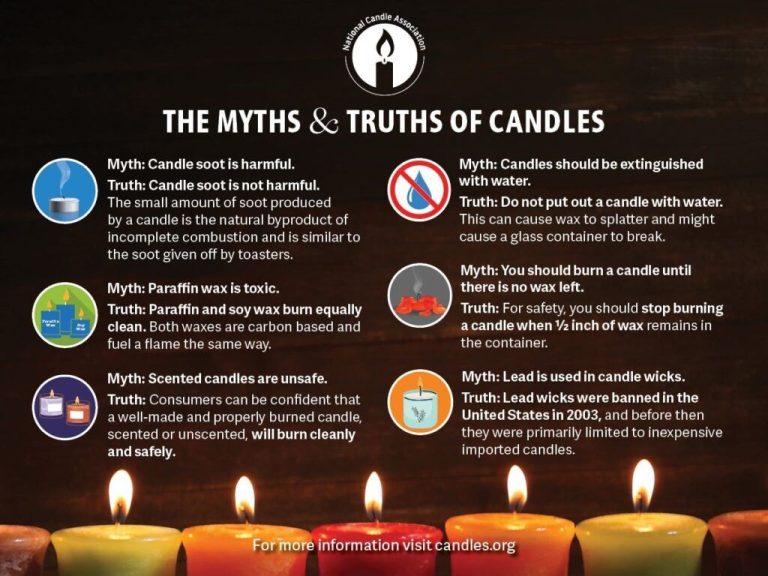Are Fragrance Oils Safe?
What are fragrance oils?
Fragrance oils, also known as aroma oils, are manufactured synthetic compounds or mixtures of natural essential oils and aroma compounds that are diluted with a carrier like mineral oil or vegetable oil [1]. They are created to smell like natural essential oils but are less expensive and don’t come from natural sources.
Fragrance oils are artificially created using aromatic chemicals. They may contain natural essential oils, but can also be made of synthetic aroma compounds [2]. The natural essential oils in fragrance oils are still synthetically made and not directly derived from plants.
There are many types of fragrance oils including floral, fruit, musk, wood, herbaceous, amber, green, oriental, vanilla, and candy scented oils. They are used in products like perfumes, candles, bath products, detergents, air fresheners, and more.
Fragrance Oil Uses
Fragrance oils have many uses around the home and for homemade products. Some of the most common uses include:
Candles – Fragrance oils are commonly added to candle wax to provide scent while the candle burns. Most candle makers use between 5-10% fragrance oil per pound of wax. Popular scents for candles include floral, food, and seasonal fragrances [1].
Diffusers – Fragrance oils can be added to diffusers to disperse scents throughout a room. Typically 5-10 drops of oil are used per diffuser use. Diffusers allow fragrance oils to be enjoyed without the need for lighting a candle [2].
Soaps – 1-3% fragrance oil per pound of soap base is commonly used when making soaps. The fragrance oils are mixed into melted soap base before pouring into molds. Fragrance oils can provide nice scents for handmade soaps [3].
Cleaning products – Small amounts of fragrance oils can be added to homemade cleaning solutions like surface cleaners, laundry detergent, and more. Typically 1-2 drops per ounce of cleaner is sufficient to provide a pleasant scent.
Fragrance Oil Chemical Composition
Fragrance oils contain both natural and synthetic ingredients blended together to create a particular scent. Natural ingredients like essential oils from plants are extracted through methods like steam distillation. Synthetic fragrance ingredients are chemically engineered in a lab to mimic natural scents or create novel fragrance compounds.
Some common natural ingredients include essential oils like lavender, rose, lemongrass, eucalyptus and sandalwood (1). Synthetic ingredients may include aroma chemicals like linalool, limonene, geraniol, and coumarin (2).
While natural ingredients are derived from plants, synthetic fragrance compounds allow much more flexibility and control in fragrance design. However, some synthetic ingredients have been associated with allergic reactions or sensitivities in those with fragrance allergies.
Common fragrance allergens include ingredients like limonene, linalool, eugenol, geraniol, coumarin, and others. Those with fragrance allergies may experience reactions from skin irritation to respiratory distress when exposed to their allergen (3).
Overall, fragrance oils contain a complex blend of natural and synthetic aromatic compounds. Being aware of common allergens can help those with sensitivities avoid problem ingredients.
(1) https://sensoriam.com/blogs/blog/what-are-fragrance-oils-and-are-they-natural-or-synthetic
(2) https://www.theflamingcandle.com/how-are-fragrance-oils-made/
(3) https://www.soapqueen.com/bramble-berry-news/what-is-a-fragrance-oil-made-of-2/
Potential health risks
Fragrance oils contain various chemicals that can cause health issues when inhaled or applied to skin. Some key risks include:
Respiratory issues
Inhaling fragrance oil particles can irritate the nasal passages and lungs. Studies show links between exposure to fragrance chemicals and increased asthma symptoms (Rádis-Baptista, 2023). Breathing difficulties, coughing, and wheezing may occur.

Skin irritation
Skin contact with fragrance oils can lead to redness, itching, swelling, and inflammation. Chemicals like synthetic musks are frequent causes of allergic contact dermatitis (Fontana Candle Co., 2021).
Headaches
Inhaling fragrance oil chemicals is linked to headaches and migraines in susceptible individuals. Compounds like limonene and eugenol can trigger headaches when present in high concentrations (Rádis-Baptista, 2023).
Reproductive issues
Certain fragrance oil ingredients like phthalates and toluene can disrupt hormones and cause reproductive problems (Fontana Candle Co., 2021). Studies associate exposure with lower sperm counts, birth defects, and adverse effects on child development.
Effect on indoor air quality
Fragrance oils can negatively impact indoor air quality by emitting volatile organic compounds (VOCs) and particulate matter into the air. VOCs are carbon-based chemicals that easily evaporate at room temperature. Common VOCs emitted by fragrance oils include limonene, alpha-pinene, benzaldehyde, and acetone. At high concentrations, VOCs can cause eye, nose and throat irritation, headaches, loss of coordination, nausea, and damage to the liver, kidneys and central nervous system [1].
Particulate matter refers to tiny particles that become airborne during the evaporation process. These particles can irritate the eyes, nose, throat and lungs. Studies have shown increased levels of particulate matter indoors when using air fresheners and scented candles [2]. People with asthma, allergies or other respiratory conditions are especially vulnerable to the effects of VOCs and particulate matter from fragrance oils.
Regulations and safety standards
In the United States, fragrance ingredients used in cosmetics are overseen by the Food and Drug Administration (FDA). Although fragrances are not required to be approved by the FDA before going to market, they must adhere to certain guidelines and regulations.
The FDA requires that fragrances and their ingredients be listed on product labels, allowing consumers to see what chemicals they may be exposed to. However, under current law, manufacturers can list fragrances with a generic “fragrance” label without identifying specific ingredients. According to the FDA, this provision aims to protect manufacturers’ trade secrets https://www.fda.gov/cosmetics/cosmetic-ingredients/fragrances-cosmetics.
The International Fragrance Association (IFRA) provides recommendations and standards for the safe use of fragrance materials. IFRA represents fragrance manufacturers worldwide and issues guidance based on scientific research into the possible health effects of fragrance ingredients. The IFRA Code of Practice lays out standards that restrict or prohibit the use of certain substances, set maximum concentration levels, and provide usage guidelines https://ifrafragrance.org/safe-use/introduction.
While the IFRA standards are voluntary, most major fragrance companies follow them. IFRA also cooperates with the Research Institute for Fragrance Materials to assess the safety of fragrance ingredients.
Tips for safe use
When using fragrance oils, it’s important to take precautions to minimize exposure and potential health risks. Here are some tips for safer use:
Ventilation – Make sure to use fragrance oils in well-ventilated areas. Open windows, use fans, or ventilate to the outside. Limited exposure in confined spaces.
Limit exposure – Use oils in moderation. Consider using for shorter periods or reducing the amount. Take breaks from scented environments.
Natural alternatives – Consider using natural products like essential oils, fresh flowers or herbs for fragrance. These may have fewer synthetic chemicals.
Read labels and follow usage guidelines. Look for child-safe and non-toxic options.
Avoid direct skin contact by diluting oils and doing a patch test for reactions first. Don’t ingest oils.
Store tightly sealed away from heat and light. Discard if oxidation causes color changes.
Consider those with sensitivities. Avoid use around asthma sufferers, pregnant women, babies and young children.
Special considerations for children and pregnant women
Children and pregnant women require special precautions when using fragrance oils due to increased vulnerability.
An infant’s skin and respiratory system is much more permeable than an adult’s. Their livers are also not fully developed to metabolize and excrete toxins [1]. Overexposure to fragrance oils can irritate their lungs, eyes and skin [1].
Pregnant women are also at higher risk since chemicals can cross the placenta and affect the fetus. Fragrance exposure should be limited during pregnancy according to the American Pregnancy Association [2].
When using fragrance oils around children and pregnant women, it’s important to follow usage guidelines carefully. Only diluted oils should be used topically, and diffused oils should be limited to short durations. Oils like peppermint should be avoided for children under 30 months due to increased risk of seizures [3].
Signs of Allergy or Sensitivity
Exposure to fragrance oils can trigger allergy symptoms in sensitive individuals. Common signs of a fragrance allergy or sensitivity include:
Skin Redness/Rash
Fragrances contain chemicals that can irritate the skin and cause red, itchy rashes or hives in some people. Contact with perfumes, colognes, and scented products may produce skin inflammation, swelling, bumps, and lesions. Rashes often develop shortly after exposure and may worsen with repeated contact [1].
Breathing Issues
Inhaling fragrances can induce breathing problems like coughing, wheezing, chest tightness, and worsened asthma symptoms. Scent chemicals can irritate the nose, throat, and respiratory tract, restricting airways. Severe reactions may cause shortness of breath or difficulty breathing [2].
Headaches
Fragrance sensitivity may lead to headaches, especially migraines, in some individuals. Chemical odors can trigger neurological symptoms for those prone to scent-induced headaches. The headaches often start soon after smelling the irritating fragrance [3].
Nausea
Strong scents from fragrance oils can cause nausea or stomach upset in those with fragrance sensitivities. The smell may trigger headaches, dizziness, and queasiness. Vomiting may also occur in severe cases or from prolonged exposure.
Conclusion
In summary, fragrance oils contain a complex mixture of natural extracts and synthetic compounds. While they can help create pleasant scents, they also pose some potential health risks. Fragrances have been linked to allergic reactions, respiratory issues, headaches, and aggravation of asthma symptoms in sensitive individuals. There is also concern about effects on indoor air quality and hormone disruption.
However, with careful and sparing use, most people can safely enjoy fragrance oils. Look for products with natural essential oils or that are marketed as hypoallergenic. Always follow label directions closely, as concentrated oils can irritate skin. Avoid diffusing or spraying around children, pregnant women, pets, or anyone with respiratory issues. Stop using immediately if any negative reactions occur. Consider fragrance-free options if you have sensitivities or health concerns.
Overall, informed and responsible use of fragrance oils should limit risks for most consumers. But certain individuals, especially children and people with allergies or asthma, should exercise more caution or avoid regular exposure.






